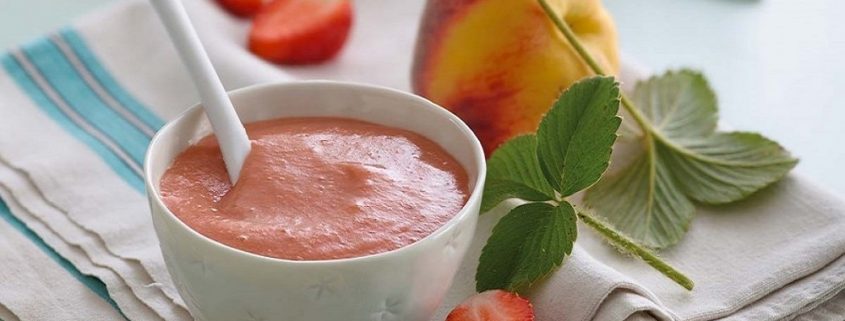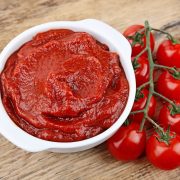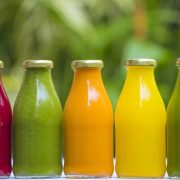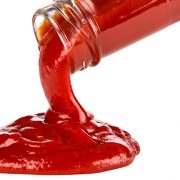Concentrate line
If you are active in the processing of products related to food industry, especially food products related to fruits and vegetables, you may have thought of having a fruit concentrate line. In this article of Shabchare, we will introduce the Concentrate action and Concentrate Line.
Concentrate
A concentrate is a form of substance which has had the majority of its base component (in the case of a liquid: the solvent) removed. For example, any fruit or vegetable from a tree or plant will have a high percentage of water, such as tomatoes, which if we can implement a technique that without changing the composition of the product and even changing its taste, can remove the water, And the dry matter density increase, concentrated action is done. (Such as removing water from juice and turning it into powder or extract that is made up of this concentrate). For longer shelf life, they add other ingredients to the concentrate or, in some cases, sterilize or pasteurize them.
One of the benefits of producing a concentrate is to lose weight and volume for easy transportation, which saves the cost of the product line, plus the concentrate is easily added when consumed by the addition of a solvent (usually water) You can return to your original state and consume it.
Different stages in concentrate line
To produce a fruit concentrate, you have to go through different steps to get the desired product. We will continue to examine the different stages in the fruit concentrate line. In this article, we look at the main stages of processing of the concentrate.
Step 1) Producing fruit puree
At this stage, the fruits that have been previously crushed by special devices are heated and inserted into a cylindrical device, this device is cylindrically pressed to remove fruit juice from the pulp.
After separating the pulp from fruit juice, juice concentrates on special systems that operate under vacuum conditions and the result is fruit puree.
Step 2) Producing fruit concentrate
Concentrate is called the conveyance of raw materials (fruits used to get the concentrate), and crushing, heating and pressing the fruit for separating juices, pasteurizing, cooling and passing through special filters, and transporting fruits to vacuum containers for condensation.
Step 3) Recovering juice
The juice comes to the pasteurizing machine after passing through special filters and at the appropriate temperature the pasteurization is done on the fruit juice.
Now, this pasteurized juice is immediately transferred to the filler and is packed hot in Doypack (aluminum packs). After being packed, it is immediately cooled down in a cold water pond and transferred to the warehouse after being picked up in a carton.
You can also read more about the Fruit juice processing line.
Step 4) Packing Juice and Fruit concentrate
Ease of use and long shelf life are important factors that make most food products canned or packaged in cans.
Juice concentrates
The process of concentrating orange juice was patented in 1948. It was originally developed to provide World War II troops with a reliable source of vitamin C. Today, the majority of retailed orange juice is made from reconstituted orange juice concentrate.
In this way, they actually provide fruits juice and mix juices with sugar and water.

Soft drink concentrates
Most sodas and soft drinks are produced as highly concentrated syrups and later diluted with carbonated water directly before consumption or bottling. Such concentrated syrups are sometimes retailed to the end-consumer because of their relatively low price and considerable weight savings.
Most juice and soda concentrates have a long shelf-life due to high sugar content and/or added preservatives.
Condensed tomato paste
Concentrated tomato paste is abundantly found and is one of many consumer’s favorites.
After the processing tomato paste, this product should be discarded from a sterilized tunnel that is used to evaporate the germs at a temperature above 100 ° C, called the sterilization process.
If they get more water from tomatoes (the higher the brix gets), the concentration become higher.

Concentrate or mashed potatoes
Potatoes are called “Concentrate” after they become mash potatoes in the processing line.
Potatoes in Iran consist of 80 percent water and 20 percent starch. When the percentage of water in the potato is less than 10 percent, it is said to be mashed potatoes (Concentrate).
Concentrate or puree of apple
The fruit puree processing line, such as apple, is exactly the same as tomato paste process. Then, after the processing of these products, purees should be kept in Aseptic bags.
It can be said that most syrups in the market are also produced using pre-prepared concentrates.
Launch of the production line of the concentrate
Shabchare company based on customer’s desire, consult them in any field of food and beverage industry. We also provide the necessary machines for launching your desired production line.
Our customers can easily reach their desired production line based on their desired quality.








Leave a Reply